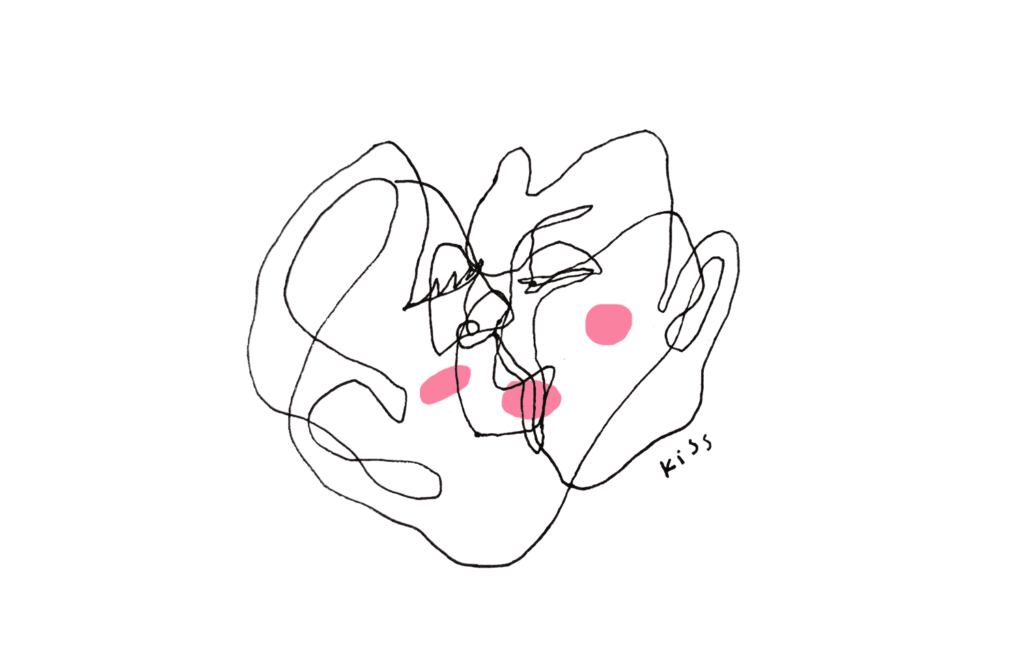In 2013, I was corresponding with Gary Borjesson, a former tutor at my alma mater, St. John’s College. Gary recommended taking up the practice of yoga and pranayama, and specifically recommended Gay Hendricks’ book, Conscious Breathing, as “a good first introduction” to pranayama.
I enjoyed Conscious Breathing tremendously, and decided to look up the author. I found that he has been a prolific author in the genre of self-help, writing about body-mind therapy modalities, relationships, success, and other related topics. One book in particular caught my eye: Conscious Loving (notes), a book Gay co-authored with his wife Kathyln.

At this point, I’ve read many of Gay’s books, but Conscious Loving is easily my favorite. The questions it asks and addresses spoke to me deeply: “Why are close relationships, which are supposed to be about love, often so painful? What are we doing that causes the pain? What are we overlooking? How can we have more love and less pain?” The example Gay and Kathlyn Hendricks set and demonstrate gave me hope that there were real answers to these questions.
Conscious Loving asks the right questions, gives solid answers, and best of all, gives concrete exercises to try by yourself or with your partner to resolve these questions.
In this post, I’ll summarize how Conscious Loving describes the challenges we face in intimate relationships and its prescriptions for how to address these issues.
An Overview of Conscious Loving
Gay and Kathlyn distinguish between three kinds or stages of relationships:
- Co-dependence: an agreement between people to stay locked in unconscious patterns.
- Co-commitment: an agreement to become more conscious.
- Co-creativity: a passionate, productive, and harmonious relationship wherein the loving interaction between two partners helps them access more of their creativity and vitality.
The book helps couples diagnose various symptoms or traps of co-dependence in their relationship, establish a shared intention to become more conscious, and create the skills and habits that help a co-committed relationship to become co-creative over time.
Codependence
Codependence is a mutual, unconscious form of addiction and stasis. The Hendricks’ describe it as “an unconscious conspiracy between two or more people to feel bad and to limit each other’s potential.” Why? Through codependence, both people enable each other to maintain bad habits and patterns, and avoid personal growth:
The basic contract is: If I allow you to sleepwalk through life, you won’t make me wake up either. If I agree not to grow, you won’t either. If I don’t insist that you change your bad habits, you won’t leave me or make me challenge my bad habits.
The two basic mechanisms of a codependent relationship are an addiction to “control and approval.” This causes both partners to be dependent on and subordinate to each other’s behavior.
The Hendricks’ name nine specific possible symptoms or manifestations of codependency, the “Nine Traps of Unconscious Loving”:
- In my relationships I let people get away with destructive behavior.
- I form relationships with people who let me get away with destructive patterns.
- I am in a relationship that resembles my parents’ relationship.
- I form relationships with people whose personalities and behavior resemble that of one or both of my parents.
- Out of reaction to parental relationships, I create relationships that are the opposite of my parents’.
- Out of childhood trauma a pattern is generated, and I play out that pattern repeatedly in my relationships.
- I participate in continual conflict in my relationships, or I avoid conflict at all costs.
- With the possibility of success at hand, I mess up.
- Because I have never learned true independence, I create relationships in which I perpetuate dependence.
In the short term, codependence can be comfortable and familiar, but in the long term, it is toxic to the health of a relationship and one’s own flourishing and self-actualization.
When we acknowledge that we have codependent behaviors in ourselves or our relationships, it is critical that we independently set the intention to become more conscious – to move from a codependent relationship to a co-committed relationship.
Each partner must make this commitment fully and independently, for themselves:
A great deal of powerful change can occur when one person in a relationship breaks free. Don’t fall into the trap of waiting to change until your partner is ready. Waiting for others to change is a sign of unconscious loving. Go ahead and make a total commitment to your individual development. However, if your partner is willing to commit to the program, the changes can be rapid indeed.
Importantly, the Hendricks’ add that the ideas in the book “work even if you have no current partner. Many of our clients worked out their major issues while single, then went on to form successful, co-committed relationships.” Furthermore, these principles apply to non-romantic relationships as well.
But within the context of a romantic relationship, if both partners make the commitment to become more conscious, a co-committed relationship becomes possible.
Co-Commitment
A co-committed relationship is founded on six essential commitments and three fundamental requirements:
The Essential Co-Commitments
- I commit myself to being close, and I commit myself to clearing up anything in the way of my ability to do so.
- I commit myself to my own complete development as an individual.
- I commit to revealing myself fully in my relationships, not to concealing myself.
- I commit myself to the full empowerment of people around me.
- I commit to acting from the awareness that I am 100 percent the source of my reality.
- I commit myself to having a good time in my close relationships.
Three Fundamental Requirements for Co-Committed Relationships
- Feel All Your Feelings: rather than repressing our feelings from ourselves or hiding them from each other, we feel and express our feelings fully.
- Tell the Microscopic Truth: “The microscopic truth is when you speak the truth about your internal experience as you are currently perceiving it. For example, “When you said you were going away for the weekend I felt a tight band of constriction in my chest and a bunch of thoughts flew through my mind like ‘She’s abandoning me’ and ‘What’ll I do all by myself?’” Telling the microscopic truth is the opposite of withholding, “the act of holding back something that needs to be said.”
- Keep Your Agreements: Do What You Said You Would Do (DWYSYWD).
With these agreements and fundamentals in place, the partners in a co-committed can move towards addressing what the Hendricks’ boldly describe as “The Only Problem You Need to Solve in a Co-Committed Relationship”: the Upper Limits Problem.
The Hendricks’ claim that we have an internal setting for how happy we are willing to feel. It is like a thermostat setting. Some people have a higher setting, and some people have a lower setting.
This is problematic for two reasons: one, ideally we would have a higher setting on our thermostat, so that our baseline happiness was higher. Second, when we are in relationships, being with someone else who we love dramatically increases our capacity for how much happiness we can experience.
This is delightful, but also uncomfortable and unfamiliar for us. Because this happiness is far higher than our thermostat setting, “we cannot feel good for very long without invoking some negative experience to bring us down.” Typically, this takes the form of having an argument; less often, it takes the form of illness or accidents, or other forms of self-sabotage. This is the Upper Limits problem.
When we recognize the Upper Limits problem, we become less interested in the content of our arguments and our disagreements, and instead turn our attention to this problem: “how to let yourself expand continuously into more positive energy.”
The basic strategy that the Hendricks’ recommend is to take time to rest and take space from each other, so that each of you can integrate the positive energy from your time together into your nervous system. Over time, cycles of togetherness and separation can allow each of you to raise the limit of how much positive energy you are each capable of experiencing.
Finding rhythms of closeness and solitude that feels good for both partners takes time and effort, but is extremely rewarding.
Co-Creativity
At one point, the Hendricks’ describe their own experience of moving from codependency to co-creativity:
When we first began to “wake up” we found ourselves mired in many patterns of unconscious loving. Both of us came from dysfunctional families, and in adulthood we had re-created many of their patterns in our own relationships. Unless you are very blessed, you are also trapped in some aspect of dysfunctional relationships. We developed the ideas in this book during our journey to co-commitment. Eventually, an exciting new state unfolded, which we call co-creativity. A co-creative relationship is passionate, productive, and harmonious. We turned the energy that would have been wasted through conflict into creative projects such as writing books, giving seminars and lectures, volunteering for activities, and building a happy family. We found that we had access to much more creativity as a partnership than each of us ever had on our own.
The Hendricks’ claim that, if the Upper Limits problem is solved, each partner can continuously expand in positive energy without arguments, drama, conflict, etc. In another book, The Big Leap (2010) Gay claims that solving the Upper Limits problem in his relationship with Kathlyn has brought them to a point where “as of this writing, it has been well over ten years since either of us has spoken a cross word or even a critical word to the other.” This isn’t conflict avoidance: theirs is, as far as I can tell, a truly beautiful and loving relationship where conflicts are addressed in a healthy and mature way.

Today, in 2021, Gay and Kathlyn are still married, working, and teaching together. I have every reason to believe that they are maintaining and deepening this state of co-creativity.
Conclusion
Implementing the ideas in Conscious Loving hasn’t been easy. Some of the co-commitments and ideas in the book that have eluded me in my relationships. But to the extent that I have been able to put its ideas into practice, it has been truly transformative.
I am grateful that the book includes exercises to do independently or with a partner that help you practice its ideas. I plan and expect to be doing these exercises with any future partners I may have, to move away from codependent tendencies and towards co-commitment and co-creativity.
Thank you to Gary Borjesson for originally pointing me towards Gay Hendricks’ work, and to S and B for practicing Conscious Loving with me.
The art in this post was created by Sílvia Bastos, and is licensed under a CC BY-NC-SA 4.0 license. You can support her work on Patreon.
